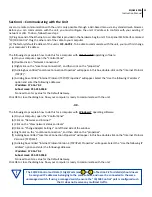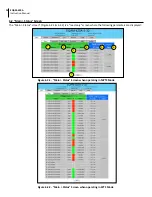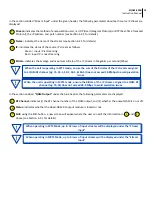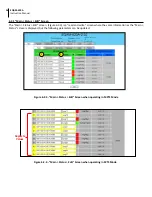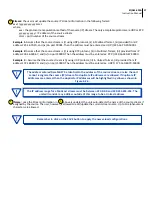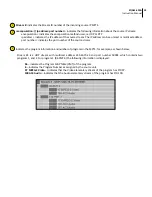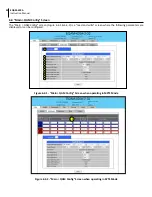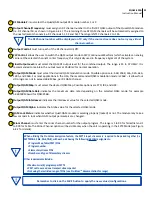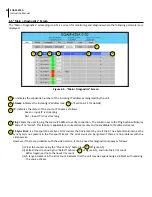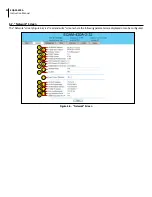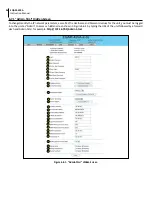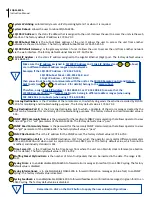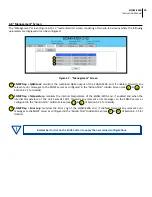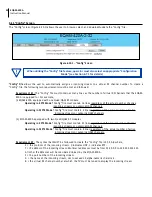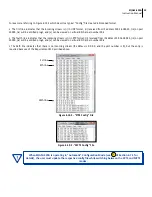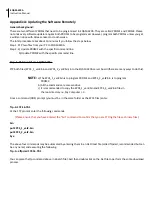
21
EQAM-420A
Instruction Manual
The RF Channel number will be displayed on TV only if the source stream does not carry any virtual
channel number.
RF Module #: must select the Quad-QAM output RF module number 1 or 2.
Output Channel/Frequency: must assign an RF channel number to the first RF QAM output of the Quad-QAM module
(i.e. RF channel 50, as shown in Figure 6.4.1). The remaining three RF QAM channels will be automatically assigned to
the next adjacent channels (i.e. RF channels 51, 52 and 53). The range is NTSC channels 2 to 155.
Output Control: must turn each of the RF channels On/Off.
CW Control: allows the user to switch the QAM output mode to CW (Continuous Waveform) which activates an analog
carrier at the selected channel’s center frequency; this is typically used in frequency alignment of the system.
Final Output Level: must select the QAM RF output level for the combined output. The range is 23 to 37 dBmv. It is
recommended to maintain the output level at 35 dBmV for normal operation.
Output QAM Mode: must select the desired QAM modulation mode. Possible options are: 64B, 256B, 16A, 32A, 64A,
128A, and 256A. For most applications in the USA, the recommended QAM modulation mode is 256B – it allows four
hD programs, not to exceed 38.8 Mbps, per RF QAM channel.
Output QAM Map: must select the desired QAM Map. Possible options are STD, IRC, and HRC.
Output QAM Data Rate: indicates the maximum data rate depending on the selected QAM mode, for example
5.360500 Mbaud for QAM 256B.
Output QAM Interleaver: indicates the interleaver value for the selected QAM mode.
Output QAM Alpha: indicates the Alpha value for the selected QAM mode
QAM Lock Status: indicates whether Quad-QAM module is working properly (locked) or not. The module may take a
few seconds to lock when QAM output parameters are changed.
Minor Channel: must enter the minor channel number for the output program. The range is 1 to 99 for Terrestrial and 1
to 999 for Cable. The Minor Channel option will be visible only when the unit is operating in the SPTS Mode (see Figure
6.4.2 for details).
Remember to click on the SAVE button to apply the new values/configurations.
9
10
11
12
1
2
3
4
5
6
7
8
When utilizing the Pro:Idiom encryption feature, the MPTS input streams are required to be paired together (i.e
MPTS#1&2, 3&4, 5&6, 7&8), with each pair having the following identical assignments:
• Program Map Table (PMT) PIDs
• Program number
• Elementary stream PIDs
• Number and type of Elementary streams
Other requirements include:
• Maximum six (6) programs per MPTS
• PMT not to exceed one transport stream packet
• Not using the restricted range of PIDs (see Pro:Idiom
TM
documentation for range)
Содержание 6522-PIL
Страница 37: ...THIS PAGE INTENTIONALLY LEFT BLANK ...
Страница 39: ......





